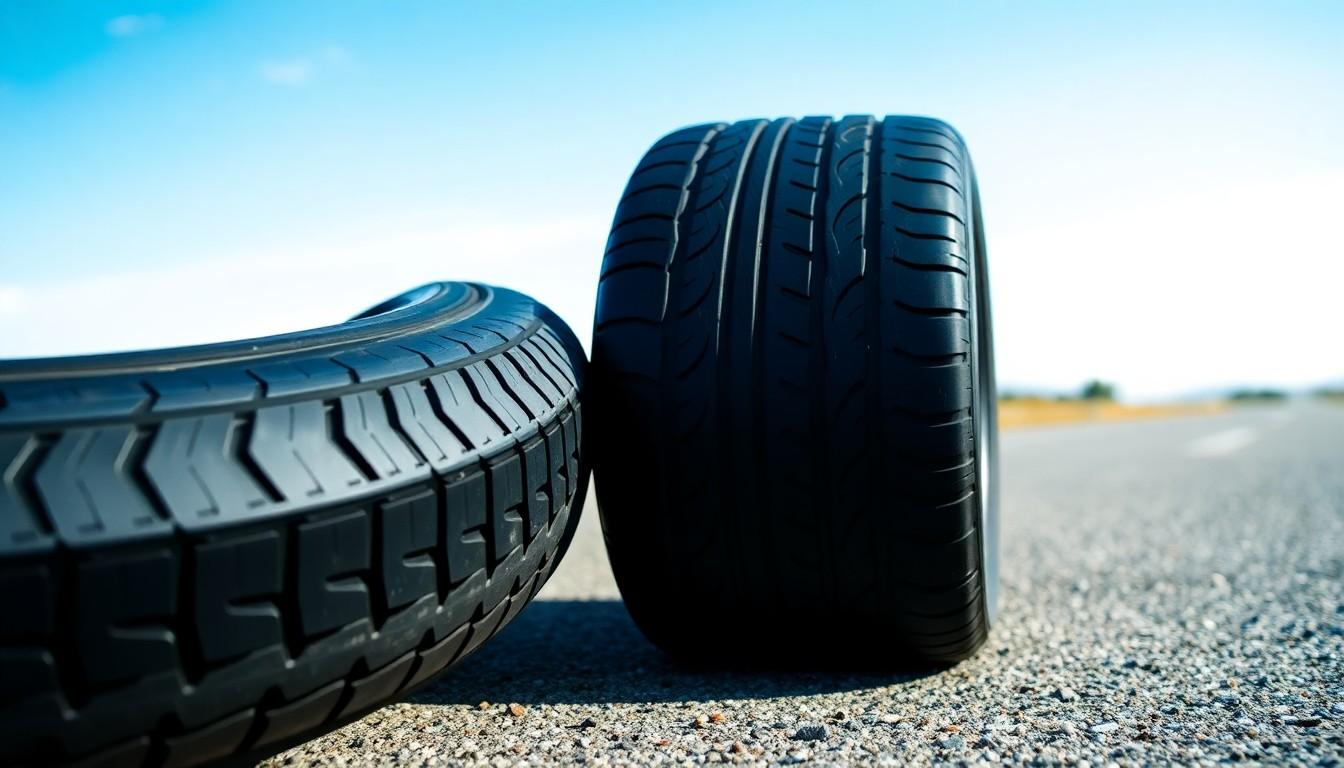Choosing the right tires for your vehicle can significantly impact your driving experience, safety, and budget. When comparing top tire manufacturers, Firestone and Bridgestone often stand at the forefront of consumers’ considerations. Both brands offer quality products, but understanding their differences is crucial for making an well-informed choice.
We’ve thoroughly analyzed both Firestone and Bridgestone tires across key factors including performance, durability, price point, and warranty coverage. While these brands share a corporate connection (Bridgestone actually owns Firestone), they maintain distinct product lines catering to different driver needs and preferences. In this comprehensive comparison, we’ll help you determine which brand might better suit your exact driving requirements.
Firestone vs Bridgestone: Brand History and Relationship
Firestone and Bridgestone share interconnected roots dating back over a century. Harvey Firestone founded Firestone Tire & Rubber Company in 1900 in Akron, Ohio, quickly establishing it as one of America’s premier tire manufacturers. The company built its reputation through innovations in tire technology and strategic partnerships with automotive pioneers like Henry Ford.
Bridgestone Corporation began its journey in 1931 when Shojiro Ishibashi established the company in Kurume, Japan. The name “Bridgestone” is actually an English translation of Ishibashi’s surname, with “ishi” meaning stone and “bashi” meaning bridge. From its inception, Bridgestone focused on producing high-quality tires with advanced engineering.
The relationship between these two tire giants transformed dramatically in 1988 when Bridgestone acquired Firestone for $2.6 billion. This acquisition came during a period of important consolidation in the global tire industry and represented Bridgestone’s strategic move to expand its presence in the North American market.
Following the acquisition, Bridgestone maintained Firestone as a distinct brand within its portfolio rather than absorbing it completely. This strategy allowed Bridgestone to leverage Firestone’s established market presence and customer loyalty in North America while gradually integrating operations and technologies between the two companies.
Today, Bridgestone operates Firestone as a subsidiary brand, targeting different market segments. Bridgestone typically positions its namesake tires in the premium segment with cutting-edge technology and performance features, while Firestone products generally occupy the mid-range market with solid performance at more accessible price points. Both brands continue to evolve under the same corporate umbrella, sharing research and development resources while maintaining their distinctive identities in the marketplace.
Tire Performance Comparison
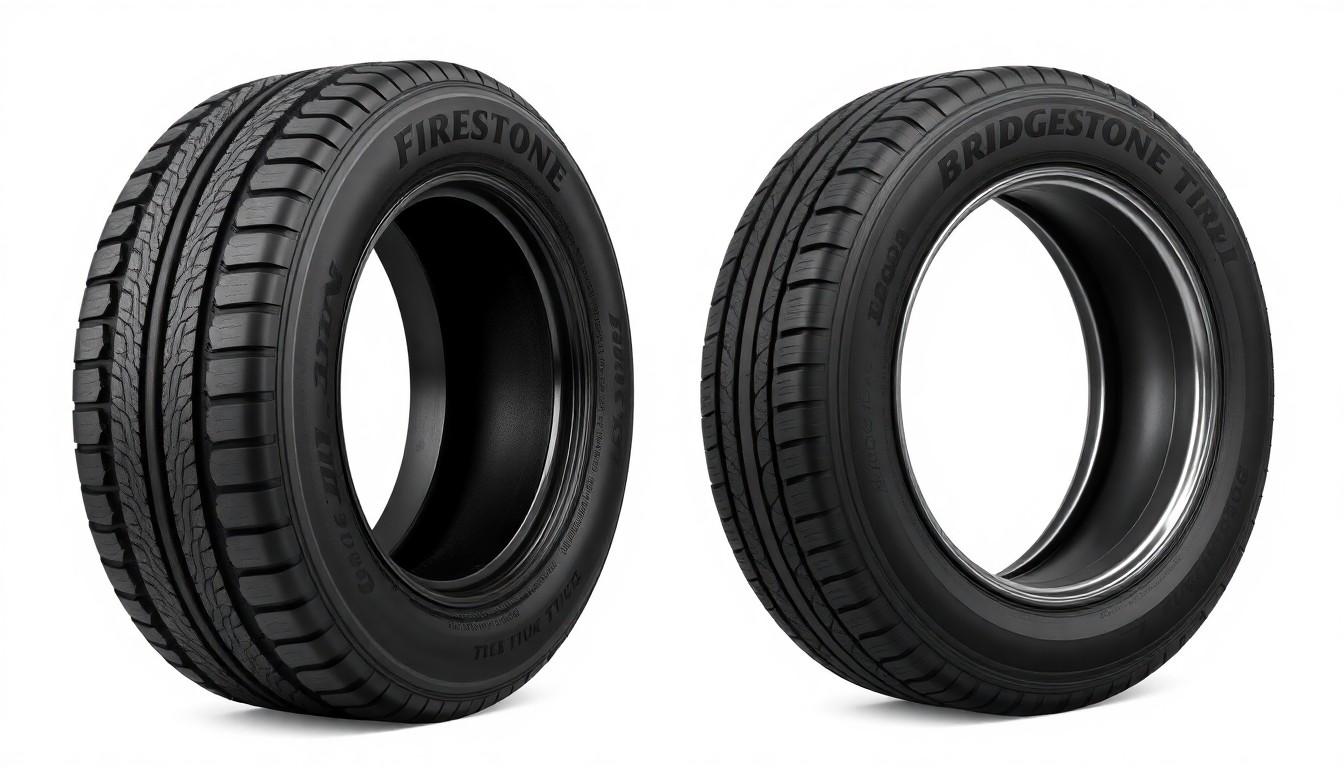
Tire performance varies significantly between Firestone and Bridgestone brands, with each offering distinct advantages for different driving needs. Our comprehensive analysis reveals key differences across several important performance categories.
Tread Life and Durability
Firestone tires balance cost-effectiveness with reasonable durability, making them popular for everyday drivers seeking reliable performance without premium pricing. These tires withstand typical wear and tear admirably, though they don’t typically match the extended lifespan of their parent company’s offerings. Bridgestone tires, in contrast, excel in longevity and durability due to substantial research and development investments. Their innovative tire technologies directly contribute to extended tread life, with models like the Dueler A/T 6 for SUVs demonstrating exceptional resilience over time.
Wet and Dry Traction
Firestone tires deliver good grip and predictable handling on dry surfaces, particularly evident in models like the Destination LE3. Their performance in wet conditions remains adequate for most driving situations, though the RoadHawk model demonstrates limitations when compared to Bridgestone alternatives. Bridgestone tires outshine competitors in both dry and wet conditions. The Potenza S007A provides exceptional dry road grip, while the Turanza 6 demonstrates superior wet traction capabilities. This enhanced grip translates to better safety margins and driver confidence during adverse weather conditions.
Winter Performance
Firestone’s winter tire options, including the Weathergrip model, offer adequate performance for moderate winter conditions. These tires provide reasonable traction in light snow but lack the specialized technology found in premium winter options. Bridgestone’s winter lineup features the advanced Weatherpeak tires, engineered specifically for harsh winter environments. These tires deliver superior traction on snow and ice, utilizing specialized compounds and tread patterns that maintain flexibility and grip in freezing temperatures.
Noise and Comfort
Firestone prioritizes ride comfort across their lineup, with models like the Firehawk Indy 500 and Destination series offering impressively quiet operation and smooth rides. Drivers seeking comfort without premium pricing find these tires particularly appealing. Bridgestone elevates the quiet driving experience with specialized models like the Turanza QuietTrack that incorporate advanced noise-reduction technologies. These premium options create an exceptionally refined driving experience, minimizing road noise transmission and improving overall comfort during daily commutes and long journeys.
Price Point Analysis
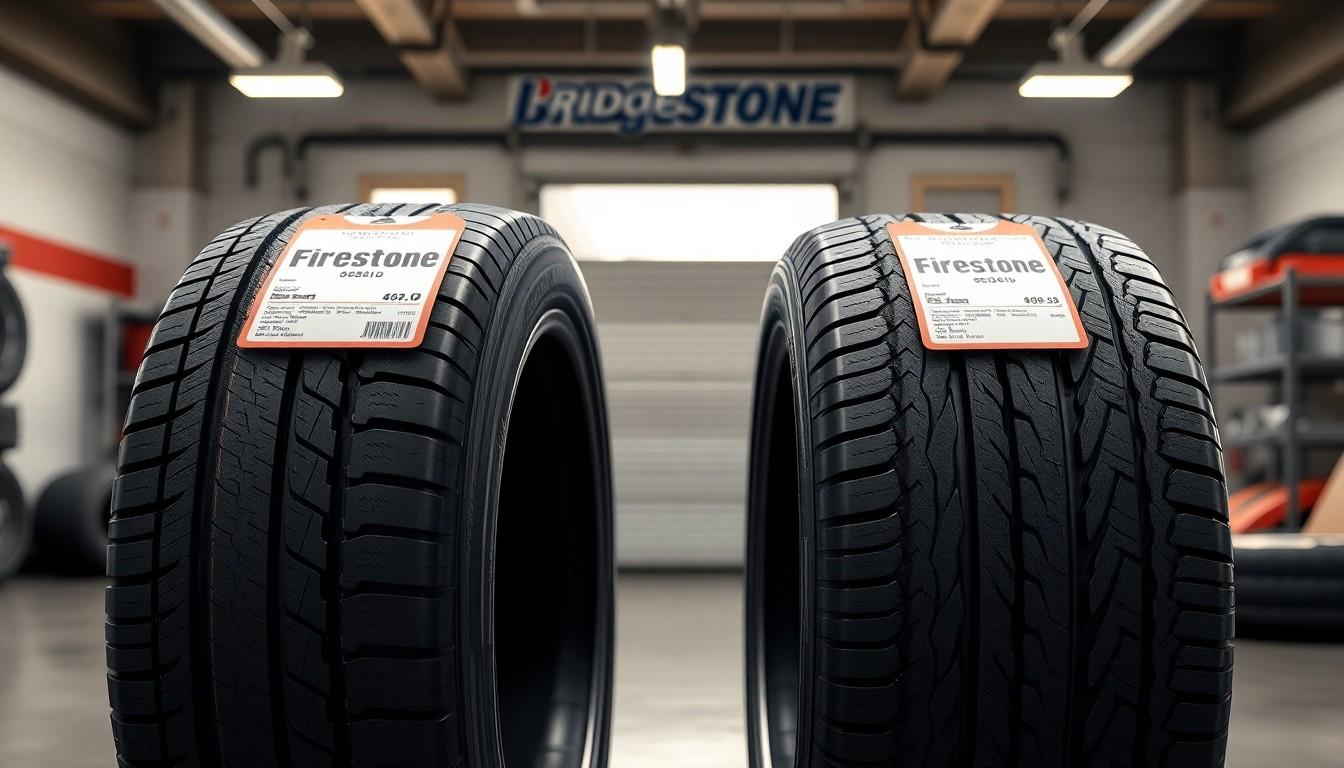
Understanding the price differences between Firestone and Bridgestone tires helps consumers make cost-effective choices based on their budget and needs. The cost variance reflects each brand’s market positioning and technological offerings.
Budget-Friendly Options
Firestone emerges as the more economical choice for price-conscious consumers. Their tires typically fall in the mid-price range, with popular models like the Champion Fuel Fighter starting around $80. Drivers looking for reliability without very costly gravitate toward Firestone’s value-driven lineup. The Destination LE3 for SUVs and the Firehawk GT for performance vehicles offer competitive pricing while maintaining acceptable quality standards. These affordable options don’t significantly compromise on performance or durability, making Firestone an attractive choice for everyday driving needs.
Premium Tire Offerings
Bridgestone positions itself in the premium segment with prices reflecting its advanced technology and superior quality. Models such as the Ecopia EP422 Plus start around $90, commanding a slightly higher price point than comparable Firestone options. Performance enthusiasts appreciate Bridgestone’s high-end offerings like the Potenza S007A for sports cars and the Dueler A/T 6 for SUVs. Substantial research and development investment results in Bridgestone’s innovative tire answers featuring exceptional grip, extended longevity, and superior comfort across various driving conditions. Premium options like the Turanza QuietTrack and Dueler H/L Alenza Plus showcase Bridgestone’s commitment to quality and performance that justifies their higher pricing structure.
Popular Tire Models Face-Off

Let’s examine how Firestone and Bridgestone’s most popular tire models compare across different categories. These direct comparisons highlight the unique strengths and features of each brand’s offerings in the marketplace.
All-Season Passenger Tires
Firestone’s Champion Fuel Fighter stands out in the all-season category with its eco-friendly design and impressive affordability, starting at approximately $80. The Firestone RoadHawk complements their lineup by delivering balanced performance across wet and dry conditions while maintaining lower noise levels. Bridgestone counters with the premium Turanza QuietTrack, which excels in providing a noticeably quieter ride alongside enhanced handling capabilities and improved fuel efficiency. Their Turanza 6 model further demonstrates Bridgestone’s technological edge with superior performance in both wet and dry conditions, plus exceptional mileage and reduced rolling resistance for better fuel economy.
Performance Tires
Firestone’s performance segment features the Firehawk Indy 500, a tire specifically engineered for sports cars that delivers responsive handling and driver comfort. This model provides reliable grip and predictable handling characteristics that enhance the driving experience without very costly. Bridgestone elevates the performance category with their Potenza S007A, a high-performance option that offers exceptional grip and precise handling specifically designed for aggressive driving scenarios. The Potenza line represents Bridgestone’s premium approach to performance tires, utilizing advanced technologies to maximize traction and control in demanding driving conditions.
Truck and SUV Options
Firestone’s Destination LE3 has earned popularity among SUV and crossover owners through its reliable grip on dry surfaces and predictable handling characteristics. This model particularly shines in all-weather versatility, featuring innovative 3D siping technology that enhances traction on snow-covered roads and wide grooves that efficiently channel water away during wet conditions. Bridgestone’s answer in this category comes in the form of the Dueler A/T 6, which masterfully balances on-road comfort with genuine off-road capability for truck and SUV enthusiasts. The Dueler series has built a reputation for exceptional grip across varied terrains, impressive lifespan, and consistent performance regardless of weather conditions, making it a premium choice for drivers who demand versatility from their vehicles.
Warranty and Customer Service Comparison
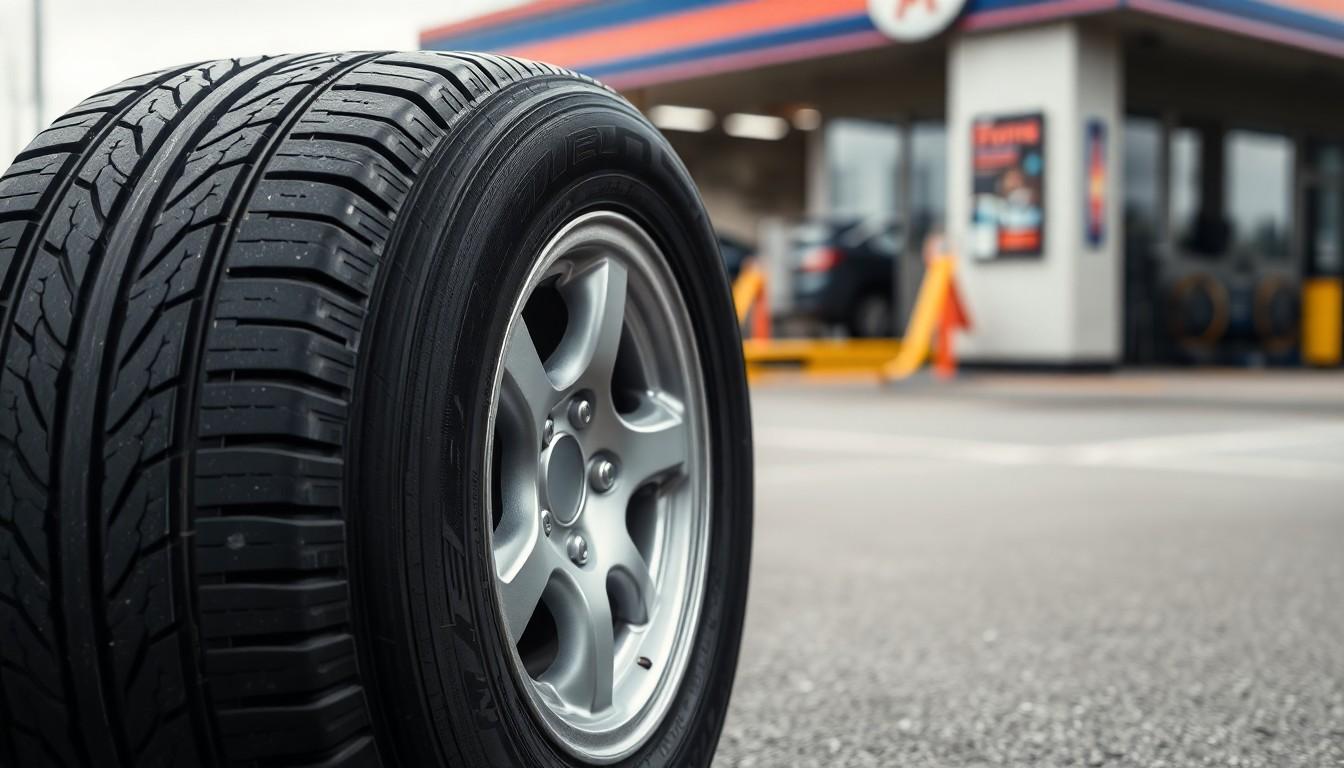
Warranty Coverage
Firestone and Bridgestone both offer comprehensive warranty policies with some notable differences. Firestone tires come with a limited warranty covering defects in materials and workmanship, with many popular models like the Champion Fuel Fighter featuring 70,000 to 80,000 mile limited treadwear warranties. Bridgestone’s warranty program also includes limited coverage, but several of their models provide more extensive protection, such as the Ecopia EP422 Plus with its 80,000 mile limited treadwear warranty.
Customer Support Networks
Both tire manufacturers have established robust customer service systems that enhance the ownership experience. Firestone maintains a widespread network of service centers and dealers across the country, making it convenient for customers to access support and maintenance services. Their customer support channels include online resources and dedicated hotlines for addressing inquiries and concerns. Bridgestone leverages its global presence to offer an extensive service center network with strong customer support systems, investing significantly in multiple support channels including online platforms, customer service phone lines, and physical service locations.
Consumer Satisfaction
Consumer ratings reveal high levels of satisfaction with both brands’ after-sales support and warranty fulfillment. Firestone tires receive consistent praise for their reliability, durability, and affordability, factors that contribute to positive customer reviews. Bridgestone earns high ratings primarily for superior quality, technological innovation, and performance characteristics that result in excellent consumer satisfaction scores. These positive ratings reflect both companies’ commitment to standing behind their products and providing responsive service when issues arise.
Which Brand Is Right for You?
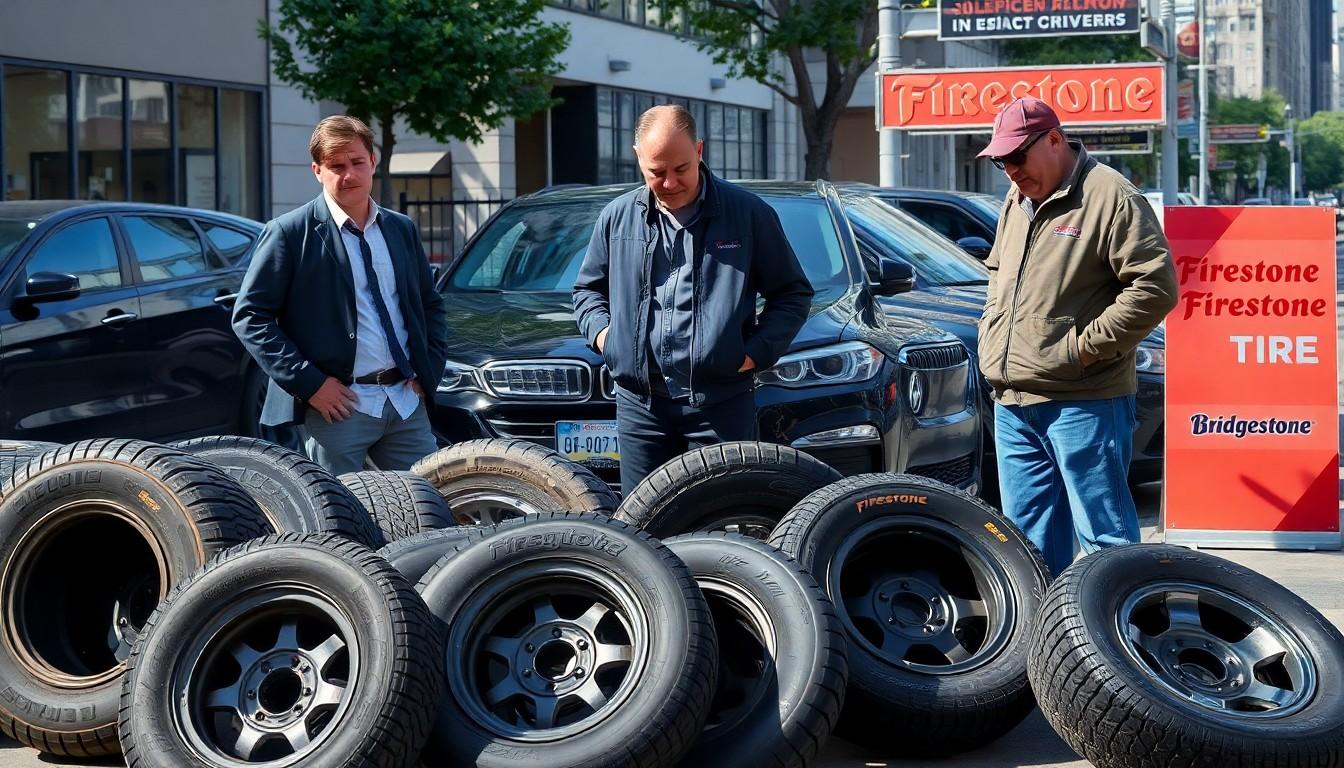
Daily Commuters
Daily commuters benefit from Firestone’s affordability and reliability. The Champion Fuel Fighter, starting at $80, delivers eco-friendly performance for everyday driving needs. This tire offers a comfortable ride with adequate grip on dry roads, making it perfect for routine trips to work or running errands.
Performance Enthusiasts
Performance enthusiasts gravitate toward Bridgestone’s advanced technology and superior handling. The Potenza S007A provides exceptional grip and responsive handling for sports cars and high-performance vehicles. These tires excel in both dry and wet conditions, giving drivers confidence during aggressive driving maneuvers.
SUV and Truck Owners
SUV and truck owners have excellent options from both manufacturers. Firestone’s Destination LE3 offers good all-weather versatility at a mid-range price point. Bridgestone’s Dueler A/T 6 stands out for those who venture off-road frequently, delivering superior performance across diverse terrains with enhanced comfort.
Weather Considerations
Weather considerations significantly impact tire selection decisions. Drivers in rainy regions gain substantial benefits from Bridgestone tires, which demonstrate exceptional wet-weather performance. Their advanced tread designs channel water more effectively, reducing hydroplaning risks compared to Firestone alternatives.
Budget-Conscious Buyers
Budget-conscious buyers typically find Firestone tires more attractive. With prices starting around $80 for quality models like the Champion Fuel Fighter, these tires provide reliable performance without very costly. Firestone focuses on delivering value-driven options with dependable technology at competitive prices.
Technology Seekers
Technology seekers appreciate Bridgestone’s commitment to innovation. Their important investment in research and development results in cutting-edge products like the Turanza QuietTrack, which features noise-reducing technology and enhanced handling characteristics. These advanced features justify the premium pricing that starts around $90 for basic models.
Conclusion
Both Firestone and Bridgestone offer exceptional tire options but serve different needs. We’ve explored how these brands compare across performance durability price and customer satisfaction.
Firestone delivers reliable mid-range tires at budget-friendly prices making them ideal for daily commuters and cost-conscious drivers. Bridgestone excels with premium offerings featuring advanced technology superior wet-weather performance and longer tread life.
Your best choice depends on your exact requirements. Consider your driving conditions budget and performance expectations when deciding between these two quality manufacturers. Whether you prioritize affordability with Firestone or premium performance with Bridgestone you’ll be investing in a trusted brand with decades of tire-making expertise.
Frequently Asked Questions
Are Firestone and Bridgestone the same company?
No, they are not the same company, but they are related. Bridgestone, a Japanese company founded in 1931, acquired Firestone, an American company founded in 1900, in 1988 for $2.6 billion. Today, Firestone operates as a subsidiary of Bridgestone, with each brand maintaining distinct product lines targeting different market segments.
Which brand offers better quality tires?
Bridgestone generally offers higher quality tires with advanced technologies and superior performance, particularly in wet conditions and longevity. However, Firestone provides good quality tires at a more affordable price point. Your choice should depend on your specific needs, driving conditions, and budget rather than assuming one brand is universally “better.”
How do the prices compare between Firestone and Bridgestone?
Firestone tires are more budget-friendly, typically in the mid-price range with models like the Champion Fuel Fighter starting around $80. Bridgestone positions itself in the premium segment with models starting around $90 (Ecopia EP422 Plus) and high-end options costing significantly more. The price difference reflects Bridgestone’s advanced technology and performance capabilities.
Which brand has better warranty coverage?
Both brands offer limited warranties covering defects in materials and workmanship. Firestone typically provides treadwear warranties of 70,000 to 80,000 miles on many models. Bridgestone often offers more extensive protection, with some models like the Ecopia EP422 Plus featuring 80,000-mile warranties. Both have strong customer support networks to back their products.
What tires are best for daily commuting?
For daily commuting, Firestone’s Champion Fuel Fighter is an excellent choice offering good fuel efficiency, reasonable durability, and affordability. If you’re willing to spend more, Bridgestone’s Turanza QuietTrack provides a quieter, more comfortable ride with enhanced handling characteristics for daily driving.
Which brand performs better in wet conditions?
Bridgestone outperforms Firestone in wet conditions. Their tires feature advanced tread designs and rubber compounds specifically engineered to maintain grip on wet surfaces. This superior wet traction translates to better stopping distances and handling in rainy conditions, making Bridgestone the safer choice for areas with frequent precipitation.
Are Firestone tires good for winter driving?
Firestone offers adequate winter tire options for moderate winter conditions, but they’re not exceptional in harsh environments. For serious winter driving with ice, deep snow, or very cold temperatures, Bridgestone’s specialized winter tires like the Blizzak series provide significantly better traction, braking, and overall safety performance.
Which brand is better for performance driving?
Bridgestone is superior for performance driving. Their Potenza S007A offers exceptional grip, responsive handling, and stability at high speeds for enthusiastic driving. While Firestone’s Firehawk Indy 500 is a capable performance tire with responsive handling, it doesn’t match Bridgestone’s advanced technology and superior construction for aggressive driving scenarios.
What’s the best choice for SUVs and trucks?
For SUVs and trucks, Firestone’s Destination LE3 offers good all-weather versatility at a reasonable price. If budget isn’t a primary concern, Bridgestone’s Dueler A/T 6 provides a better balance of on-road comfort with off-road capability. Your specific vehicle use (highway vs. off-road) should guide your decision.
How long do these tires typically last?
Bridgestone tires generally last longer than Firestone tires due to superior materials and construction. Many Bridgestone models offer 70,000-80,000 mile treadwear warranties, while Firestone typically provides 65,000-75,000 miles. Actual lifespan varies based on driving habits, road conditions, maintenance, and the specific tire model chosen.

